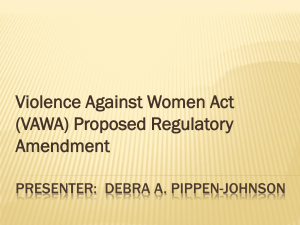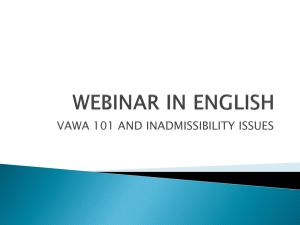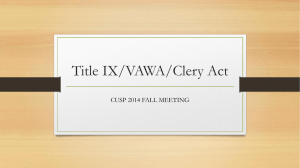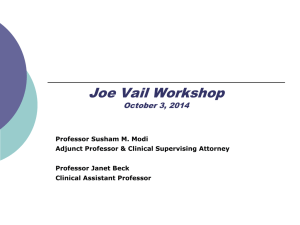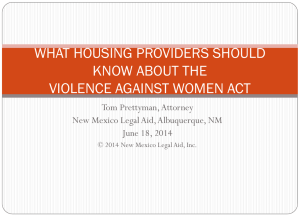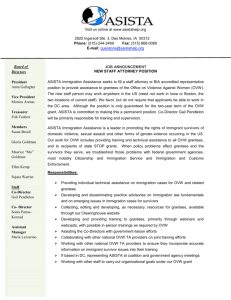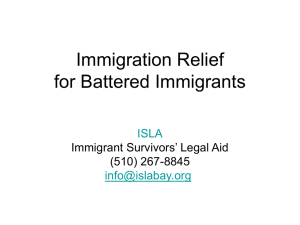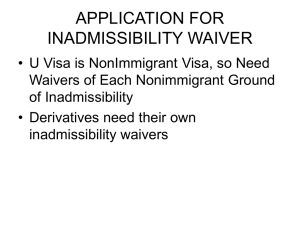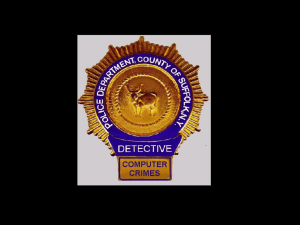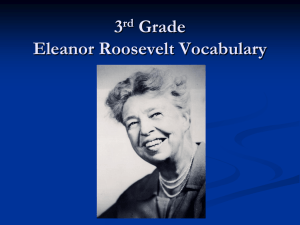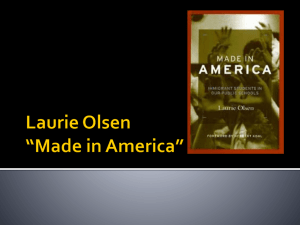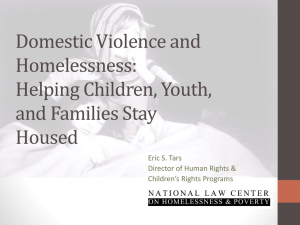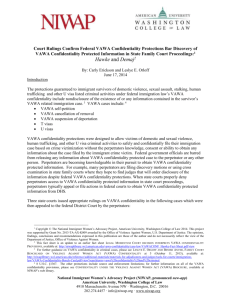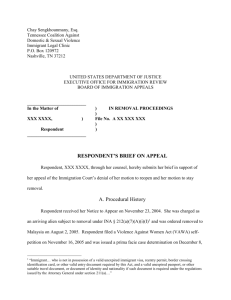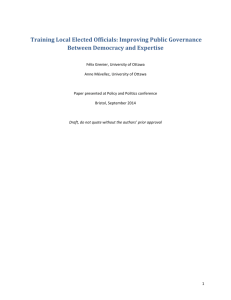Don`t Take No for an Answer - Encuentro Latino, National Institute
advertisement
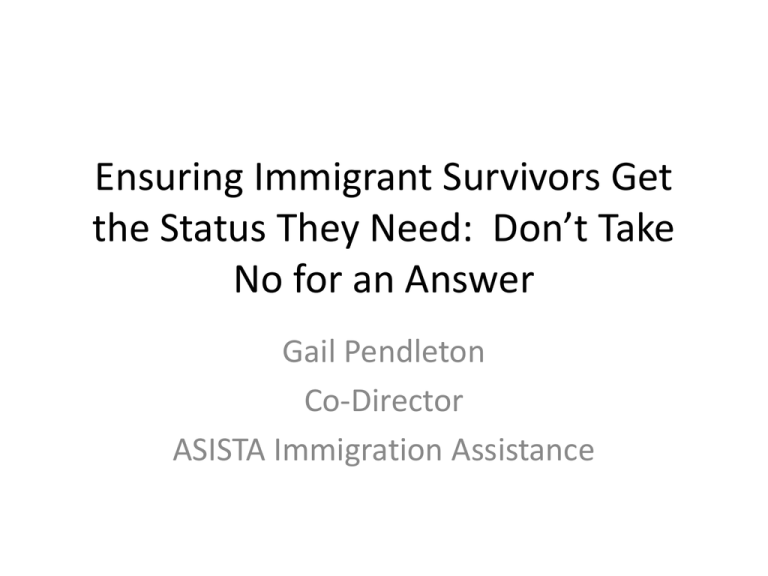
Ensuring Immigrant Survivors Get the Status They Need: Don’t Take No for an Answer Gail Pendleton Co-Director ASISTA Immigration Assistance Goals • Identify potential problems in cases • Answer these problems with effective arguments and documentation What Problems? • With VAWA self-petitions? • With U visas? What we’ll do • Quick review of VAWA & U requirements • Suggestions for main problems we see – Requests for more evidence – Inadmissibility barriers – Getting U certifications VAWA Self-Petitioning: Quick Review Self-petitioning for domestic violence victims: • Created by VAWA 1994 • Self-Petitioner must show: – Battery or extreme cruelty to self or child – Good moral character – Citizen or lawful permanent resident spouse or parent – Married in good faith – Resided together Created by Sonia Parras, ASISTA 2009 Proving Battery/Extreme Cruelty • • • • To self or, if parent, to child If spouse, during marriage If child, when abuser is/was parent Does not have to have occurred in the United States • What is it and how do you show it? Proving Abuser’s Status • Did he file anything for her or children? • Is he a lawful permanent resident or naturalized US citizen? • Who else has he told about his status? Proving Legal Marriage • Proof of prior divorces of both parties • Common law marriages are valid if valid under family laws • Bigamy by abuser will not bar filing if – Good faith intent by applicant AND – Legal ceremony • Good faith marriage – Not solely to gain immigration status Proving Good moral character • Criminal records check • If there are problems, are they – Waivable under other immigration provisions? – Connected to domestic violence? Making it Easy for CIS: Road map cover letter – Bullet points on how she’s eligible • Two sentences for each proof requirement • Refer to documents that support • Highlight support within in documents Document Index • If you have multiple documents – YOUR affidavit to support suffering • Do a short index that says what each document shows, here’s a start for U visas: – A. Victim of crime – Certification – Her affidavit – B. Substantial abuse • Your affidavit • Her affidavit Flagging Issues for Vermont • Mark outside of envelope and cover sheet: – “VAWA/U” application in BIG RED LETTERS • Also note in cover letter for VAWAs – Priority date transfer if old filing – Children needing work authorization • Request deferred action for them – Basis for work authorization • Immediately eligible to adjust - 8 CFR §274a.12(c)(9) • Deferred action - 8 CFR §274a.12(c)(14) • VAWA approval = (c)(31) I RFE responses • Check your organization • Reiterate how it met any credible evidence standard • Show how tried to get and what got instead • Ask for supervisor review via email: • Us & Ts: hotlinefollowupI918I914.vsc@dhs.gov • VAWA: hotlinefollowupI360.vsc@dhs.gov Common problems • Good faith marriage • Credibility • Good moral character – Crimes – False USC v. false testimony Flagging Inadmissibility: What Problems Do You See? Common Inadmissibility Barriers • Prior Removals • Unlawful presence • Fraud • Crimes • NOT public charge General Arguments • The ground doesn’t apply at all – Elements that trigger are lacking – Get the state statute and check • Even if it does apply, there’s a waiver Excellent Waivers: VAWA • 212(i) for Fraud – Extreme Hardship to Self and/or • USC/LPR/Qualified Alien parent or child • 212(h) for certain crimes – (1)(C) = qualifies as self-petitioner • 212(d)(13) & (14) for Ts & Us – T = national interest and connection to victimization – U = public or national interest Excellent Waiver: U • 212(d)(14) = “national or public interest” • What are your arguments? U Visa Eligibility Requirements • Victim of qualifying criminal activity; • Possesses information about that crime; • Helpful to law enforcement • Substantial physical or mental abuse from crime; • Admissible to US or merits waiver 20 Certification Issues: Capturing the Crime • Brainstorm with LEOs if not obvious, focusing on facts • For not obvious, use category analysis not “similar” – Similar = extremely limited because focuses on elements – Category = facts plus elements Building Relationships with LEOs • Who do they already work with? – DV/SA/public safety committees? – Work with your DV/SA partners (if you don’t know them, we will connect you) • Whose opinion do they care about? – Other influencers? E.g., mayors, clergy, be creative • What do you think they think about lawyers or immigrants’ rights advocates? Acknowledge Your Political Environment • Will shape what you can do – Under the radar can be more effective • Reward allies who will suffer from doing this – Awards; invite to community events • Being a group is better than being alone • Allies not identified as immigrant rights advocates are good messengers for changing environment: their agenda is not suspect Principles of Working Together • Identify each other’s goals and priorities • Acknowledge where they may conflict but • Find common ground – Every “person” in this country has the right to due process and justice – If a class of victims fears accessing justice, public safety is at risk More Working Together • Share how your systems work (summarize) • Identify where your assumptions about each other were off (assess and adapt) • Set up transparent communication systems • Try to plan for individuals leaving the team – Conundrum: Protocols and MOUs must be flexible, not rigid, or they may do more harm than good (assess and adapt) Certification Issues: Capturing the Crime • Brainstorm with LEOs if not obvious, focusing on facts • For not obvious, use category analysis not “similar” – Similar = extremely limited because focuses on elements – Category = facts plus elements Who Can Certify • “Supervisors” – Can be “U supervisors” – Letter from agency head designating “U supervisors” to attach to every cert • Non-crim agencies – Do they detect or investigate crimes? – Regs say CPS, EEOC and DOL but still show law/regs/personnel policies-- empower to detect crimes even if refer for charging/prosecution? EEOC, DOL & CPS • Contact ASISTA for EEOC and DOL advice – Special training on this – National advocacy group • Contact Immigrant Child Welfare network for CPS advocacy brainstorming and training – Yali Lincroft = volunteer; send me email and I’ll forward to her Resources Gail Pendleton Gailpendleton@comcast.net Immigration TA (Asista Project) www.asistahelp.org questions@asistahelp.org DV/SA/Trafficking Resources (FVPF) www.endabuse.org, immigrant women Family law, public benefits (IWP of LM) www.legalmomentum.org, immigrant women’s project
